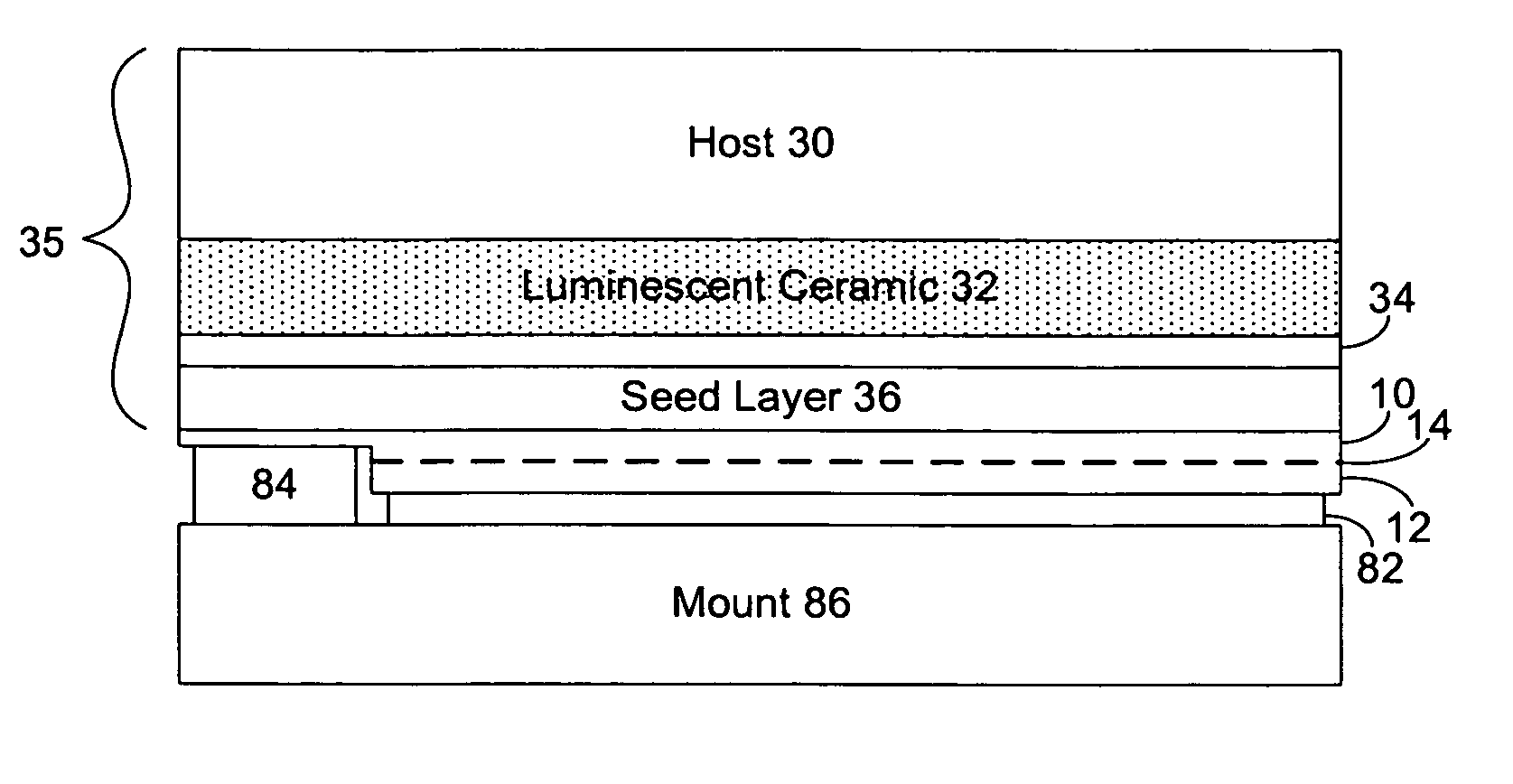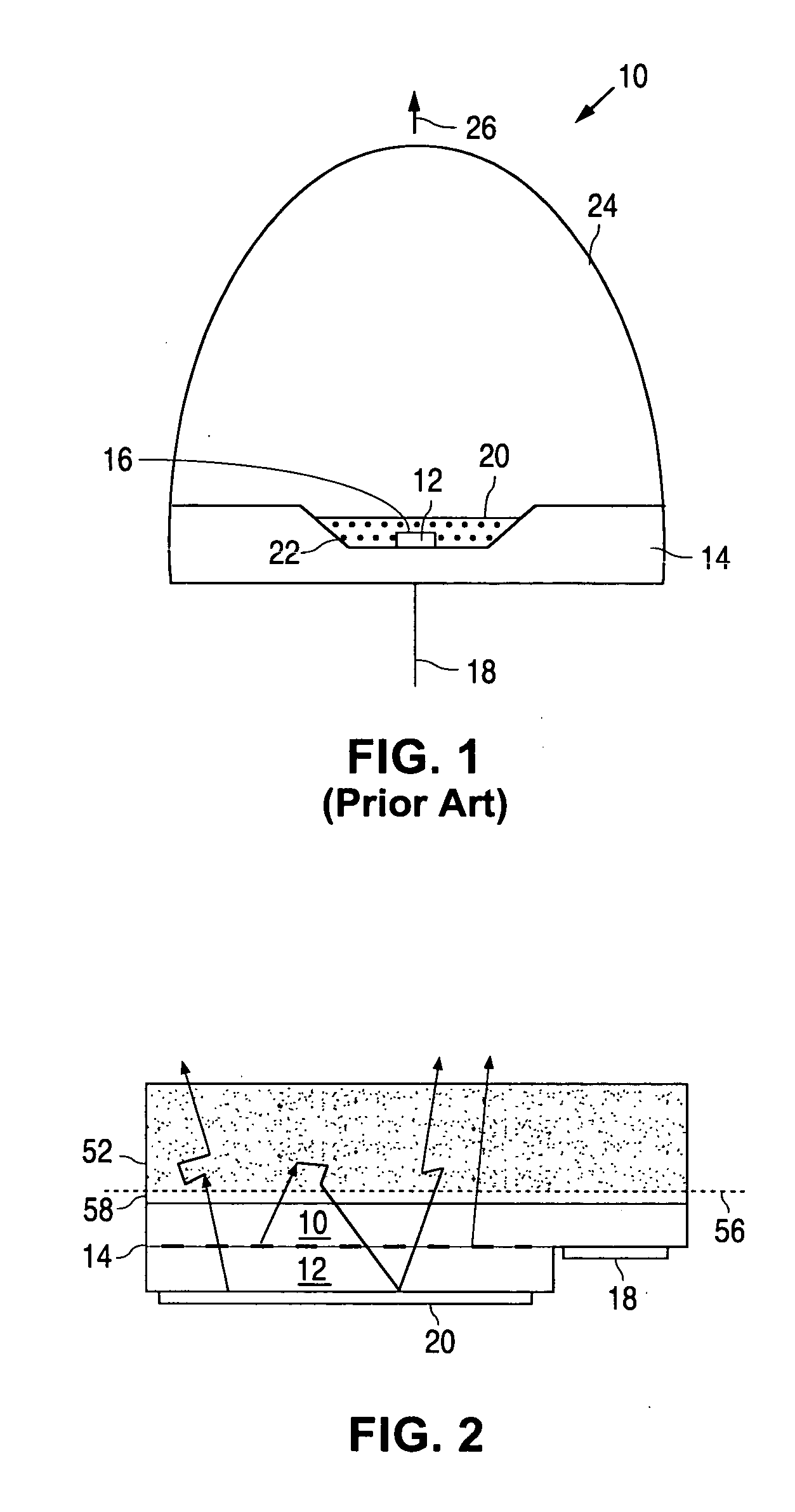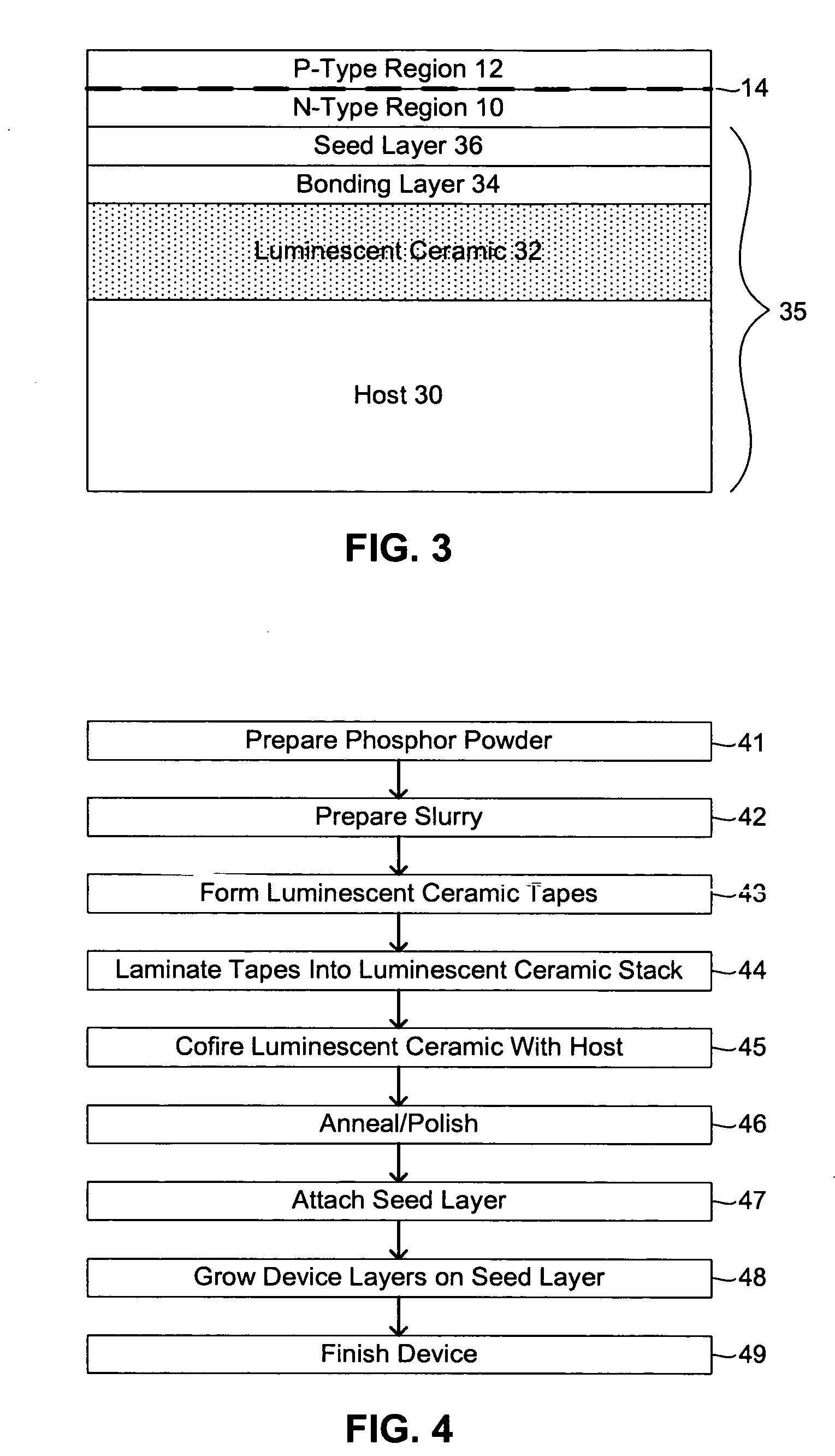Luminescent ceramic element for a light emitting device
a technology of light-emitting devices and ceramic elements, which is applied in the direction of basic electric elements, chemistry apparatuses and processes, and light-emitting compositions. it can solve the problems of reducing the light extraction efficiency of the device, affecting the appearance of the light emitted from the device, and affecting the uniformity of the organic encapsulant used in layer b, so as to reduce the scattering loss and be easy to handle.
- Summary
- Abstract
- Description
- Claims
- Application Information
AI Technical Summary
Benefits of technology
Problems solved by technology
Method used
Image
Examples
Embodiment Construction
[0024] U.S. patent application Ser. No. 10 / 861,172, titled “Luminescent Ceramic for a Light Emitting Device,” filed Jun. 3, 2004 and incorporated herein by reference describes wavelength converting materials such as phosphors formed into ceramic slabs, referred to herein as “luminescent ceramics,”“ceramic layers” or “ceramic phosphors.” The ceramic slabs may be self-supporting layers formed separately from the semiconductor device, then attached to the finished semiconductor device or used as a growth substrate for the semiconductor device. The ceramic layers may be translucent or transparent, which may reduce the scattering loss associated with non-transparent wavelength converting layers such as conformal layers. Luminescent ceramic layers may be more robust than thin film or conformal phosphor layers. In addition, since luminescent ceramic layers are solid, it may be easier to make optical contact to additional optical elements such as lenses and secondary optics, which are also ...
PUM
| Property | Measurement | Unit |
|---|---|---|
| thickness | aaaaa | aaaaa |
| thickness | aaaaa | aaaaa |
| thickness | aaaaa | aaaaa |
Abstract
Description
Claims
Application Information
 Login to View More
Login to View More - R&D
- Intellectual Property
- Life Sciences
- Materials
- Tech Scout
- Unparalleled Data Quality
- Higher Quality Content
- 60% Fewer Hallucinations
Browse by: Latest US Patents, China's latest patents, Technical Efficacy Thesaurus, Application Domain, Technology Topic, Popular Technical Reports.
© 2025 PatSnap. All rights reserved.Legal|Privacy policy|Modern Slavery Act Transparency Statement|Sitemap|About US| Contact US: help@patsnap.com



